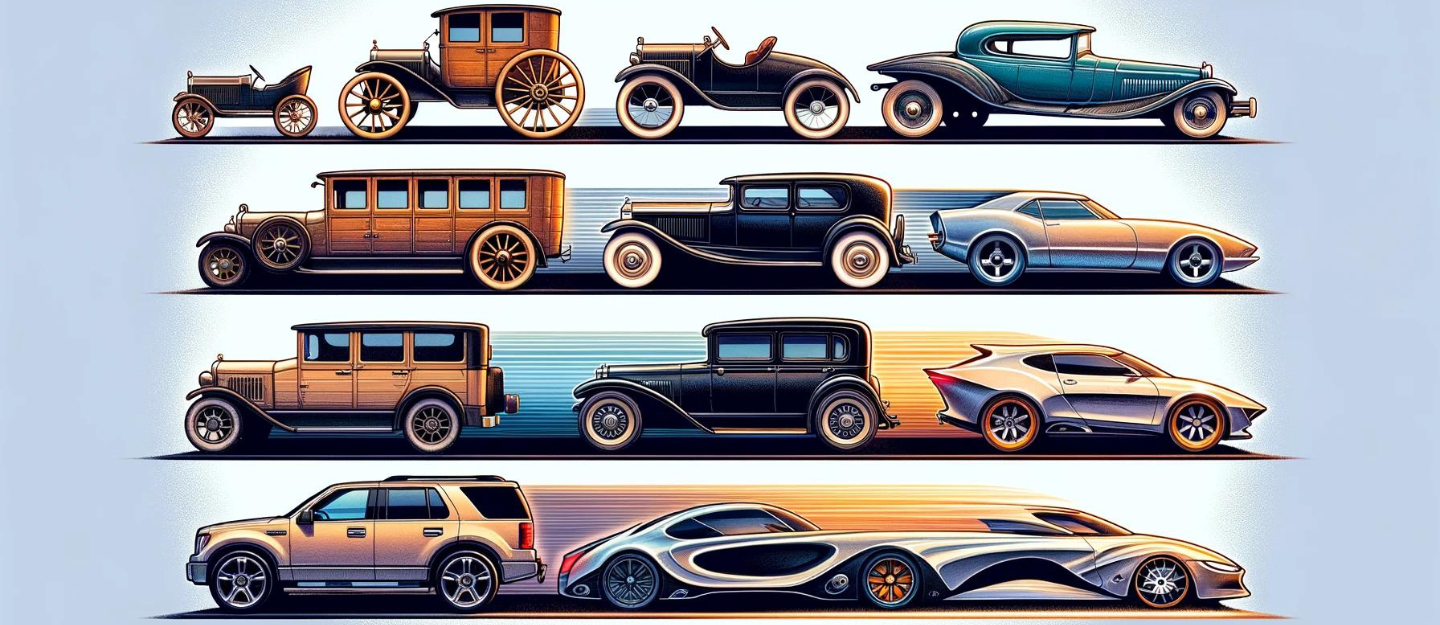The allure of vintage cars remains undiminished in the modern era, captivating enthusiasts with their timeless elegance and historical significance. From the earliest automobiles to the stylish classics of the mid-20th century, vintage cars offer a unique window into the past while continuing to influence contemporary automotive design. This article delves into the evolution of vintage cars, examining their origins, development, and the factors contributing to their enduring appeal.

The Origins of Vintage Cars
The Dawn of the Automobile
The late 19th and early 20th centuries witnessed the birth of the automobile, a revolutionary invention that transformed transportation. Early vehicles, such as the Benz Patent-Motorwagen and the Ford Model T, laid the groundwork for future innovations. These pioneering automobiles were often handcrafted, featuring intricate designs and rudimentary mechanics compared to today’s standards.
The Roaring Twenties and the Birth of Style
The 1920s marked a significant shift in automotive design, with manufacturers focusing not only on functionality but also on aesthetics. The era's cars, such as the Duesenberg Model J and the Cadillac V-16, were symbols of luxury and sophistication. Advances in engineering led to more powerful engines and improved reliability, making automobiles more accessible to the public.
The Golden Age of Automobiles
Post-War Innovation and Growth
The post-World War II era heralded the golden age of automobiles. The 1950s and 1960s saw a surge in car production and innovation, driven by economic prosperity and technological advancements. Iconic models like the Chevrolet Bel Air, Ford Thunderbird, and the Volkswagen Beetle emerged during this period, characterized by their distinctive designs and enhanced performance.
Cultural Impact and Iconic Models
Vintage cars from this era became cultural icons, immortalized in films, music, and popular culture. The sleek lines of a 1957 Chevy or the muscle-bound presence of a 1969 Mustang evoke a sense of nostalgia and freedom. These cars were not just modes of transport; they were symbols of status, personal identity, and societal change.
The Modern Appeal of Vintage Cars
Restoration and Preservation
The restoration and preservation of vintage cars have become a thriving hobby and industry. Enthusiasts and collectors invest significant time and resources to restore classic vehicles to their original glory. This process involves meticulous attention to detail, sourcing authentic parts, and maintaining the integrity of the original design.
Classic Car Shows and Auctions
Classic car shows and auctions are pivotal in the vintage car community, providing platforms for enthusiasts to showcase their prized possessions. Events like the Pebble Beach Concours d'Elegance and the Barrett-Jackson auction attract global attention, highlighting the continued fascination with classic automobiles. These events also serve as social gatherings, fostering a sense of community among vintage car aficionados.
The Influence on Modern Car Design
The influence of vintage cars on modern automotive design is undeniable. Contemporary manufacturers often draw inspiration from classic models, incorporating retro elements into new designs. Cars like the Ford Mustang and the Fiat 500 exemplify this trend, blending nostalgic aesthetics with modern technology and performance.
Challenges and Opportunities in the Vintage Car Market
Environmental Concerns
One of the significant challenges facing the vintage car market is environmental sustainability. Classic cars, with their older engines and lack of modern emission controls, are less eco-friendly compared to today’s vehicles. However, advancements in technology have led to the development of eco-friendly restoration techniques, such as electric conversions, allowing vintage car owners to enjoy their vehicles while minimizing environmental impact.
Market Trends and Investment Potential
The vintage car market has also become a lucrative investment avenue. Certain classic models appreciate significantly in value over time, attracting investors and collectors alike. Understanding market trends, rarity, and historical significance is crucial for making informed investment decisions in the vintage car market.
The Future of Vintage Cars
Technological Integration
As technology continues to advance, the integration of modern features into vintage cars becomes increasingly feasible. Innovations such as electric powertrains, advanced safety systems, and modern infotainment options are being adapted to fit classic vehicles. This blend of old and new ensures that vintage cars remain relevant and functional in the contemporary landscape.
Preserving Automotive Heritage
Preserving the heritage and history of vintage cars is paramount for future generations. Museums, car clubs, and educational programs play a vital role in fostering appreciation and understanding of classic automobiles. Efforts to document and archive the history of significant models and their impact on society are essential for maintaining the legacy of vintage cars.
Conclusion
The evolution of vintage cars is a testament to human ingenuity, creativity, and passion for automotive design. From their humble beginnings to their status as cherished collectibles, vintage cars have left an indelible mark on the world. As we move forward, the preservation and appreciation of these classic vehicles ensure that their legacy endures, inspiring future generations of car enthusiasts.
By exploring the journey of vintage cars, we gain a deeper understanding of their significance and the timeless appeal they hold in the modern era. Whether through restoration, collection, or simply admiration, vintage cars continue to captivate and inspire, proving that true classics never go out of style.


You must be logged in to post a comment.